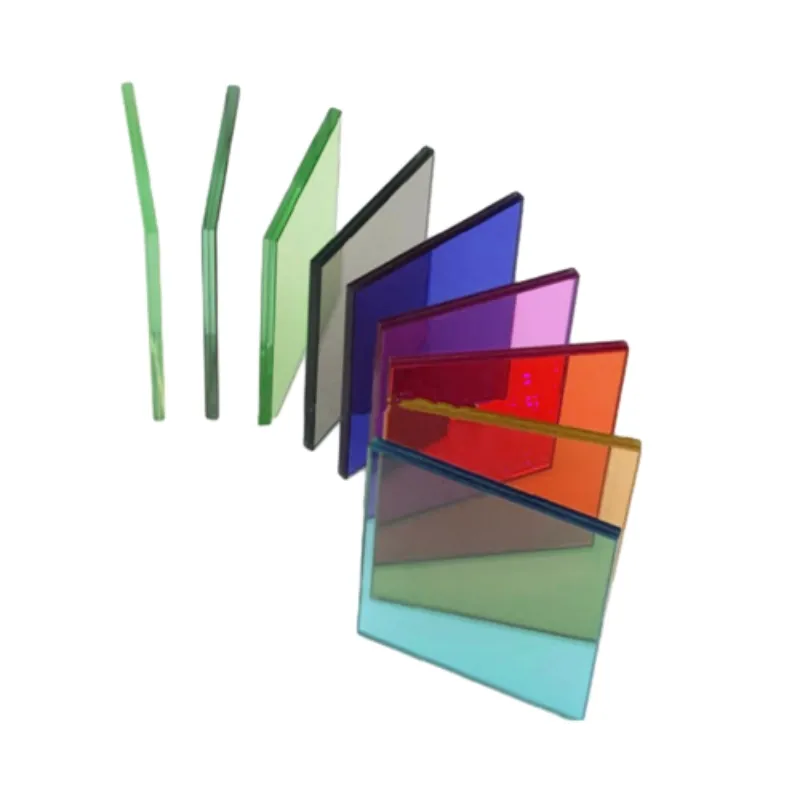Nov . 14, 2024 11:07 Back to list
tinted tempered glass
The Versatility of Tinted Tempered Glass A Modern Architectural Element
In contemporary architectural design, the use of tinted tempered glass has become increasingly popular due to its aesthetic appeal and functional benefits. This type of glass not only adds a modern touch to buildings but also plays a crucial role in enhancing energy efficiency and occupant comfort.
Understanding Tinted Tempered Glass
Tinted tempered glass is created through a heat treatment process that increases its strength and safety. The glass is heated to high temperatures and then cooled rapidly, which hardens the material and makes it more resistant to impact and thermal stress. Tinted varieties incorporate pigments during manufacturing, which can reduce the amount of sunlight entering a space. This feature is particularly beneficial in large buildings with extensive glass facades, where sunlight can create an oppressive internal environment.
Benefits of Tinted Tempered Glass
1. Energy Efficiency One of the most significant advantages of tinted tempered glass is its ability to reduce energy costs. By limiting the amount of solar heat that enters a building, it helps maintain a comfortable indoor temperature, thus reducing the reliance on air conditioning systems. During hot summer months, tinted glass can significantly decrease cooling loads, leading to lower energy bills and reduced environmental impact.
2. UV Protection Tinted tempered glass also provides excellent protection against harmful ultraviolet (UV) rays. These rays can cause fading and deterioration of interior furnishings, artwork, and flooring. By filtering out a substantial portion of UV radiation, tinted glass helps preserve the integrity and color of interior spaces, creating a more sustainable environment.
3. Glare Reduction Glare can be a significant issue in commercial and residential buildings, particularly in spaces with large windows. Tinted tempered glass reduces glare, making interior environments more comfortable for occupants. This is crucial in workplaces where individuals may spend long hours on computers or engage in tasks requiring visual precision.
tinted tempered glass

4. Aesthetic Appeal Beyond functional benefits, tinted tempered glass also enhances the aesthetic appeal of buildings. It can be produced in a range of colors and shades, allowing architects and designers to create visually stunning structures. The reflective quality of tinted glass can create a sleek, modern look while seamlessly blending with various architectural styles.
5. Safety and Security Tempered glass is significantly stronger than standard glass, making it a safer choice for buildings. In case of breakage, tempered glass shatters into small, blunt pieces rather than dangerous shards, minimizing injury risk. This feature, combined with its tinting, offers an additional layer of privacy and security, as it is more difficult to see through tinted glass from the outside.
Applications of Tinted Tempered Glass
The applications of tinted tempered glass are vast and varied. It is commonly used in commercial buildings, skyscrapers, and retail spaces, where large expanses of glass can dominate the architecture while offering functional benefits. Residential applications are also on the rise, with homeowners opting for tinted glass in windows, patio doors, and conservatories to enhance their living environment.
In addition to traditional applications, tinted tempered glass is also gaining traction in innovative design projects. Architects are increasingly experimenting with glass in structures to create dynamic and engaging spaces, utilizing tinted variants to achieve visual effects that change throughout the day as natural light shifts.
Conclusion
In summary, tinted tempered glass is an exceptional material that combines beauty, functionality, and efficiency. Its ability to enhance energy performance, protect against UV rays, reduce glare, and improve safety makes it a valuable choice for modern architecture. As the demand for sustainable building practices continues to grow, the role of tinted tempered glass is likely to become even more significant, making it a cornerstone of contemporary design and construction. Investing in this innovative material is an investment in the future of both architecture and energy efficiency.
-
Safety and Style with Premium Laminated Glass Solutions
NewsJun.24,2025
-
Reinvents Security with Premium Wired Glass
NewsJun.24,2025
-
Premium Float Glass Line for Modern Architecture
NewsJun.24,2025
-
Low Emissivity Glass for Energy-Efficient Architecture
NewsJun.24,2025
-
High-Performance Insulated Glass Solutions for Modern Architecture
NewsJun.24,2025
-
Elevates Interior Style with Premium Silver Mirror
NewsJun.24,2025
Related PRODUCTS














